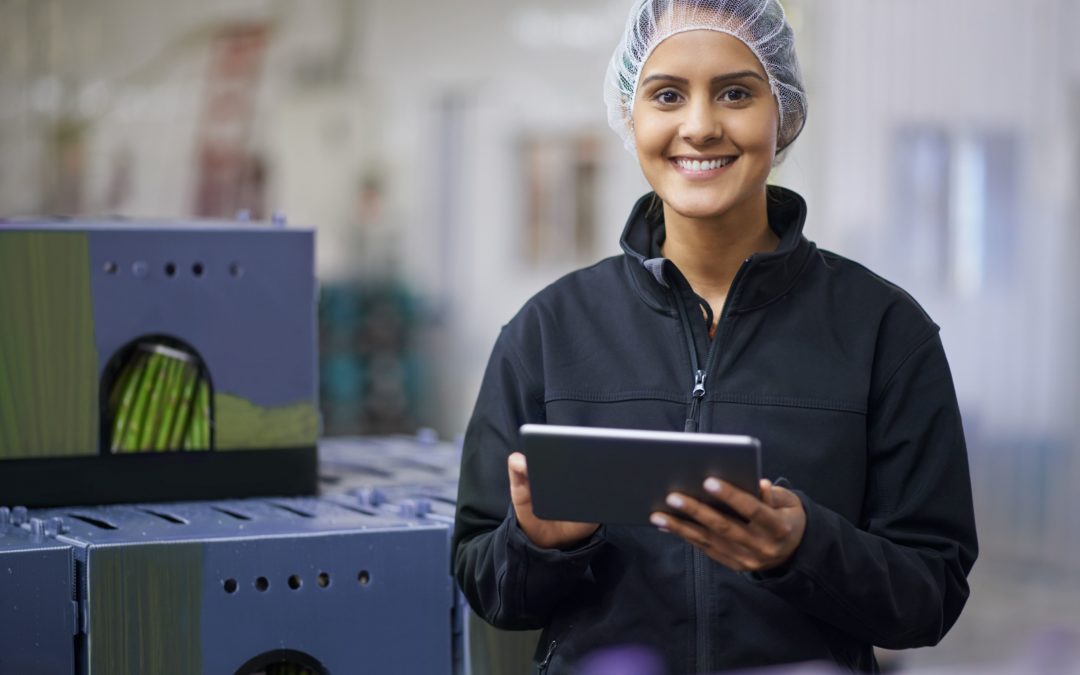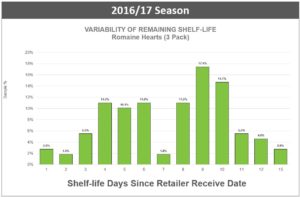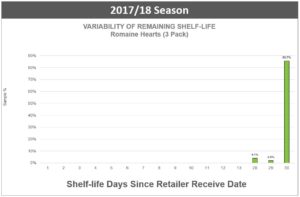Digital transformation – the application of digital technologies to fundamentally impact all aspects of business and society – has been underway for years. Now, more recently, the wave of digital innovation has come to the fresh food supply chain and post-harvest technology. Growers, shippers, processors, logistics providers and grocers are looking to new software and hardware solutions to drive change that fundamentally improves their business and the products that they offer to their customers.
Digital transformation for the fresh food supply chain provides benefits including:
- Improved supply chain visibility and traceability
- Reduced food waste and costs and increased profitability
- Enhanced food safety capabilities.
Digital Transformation Goes Pragmatic
For many, the concept of “digital transformation” can be a daunting one. Forrester Research, in their 2019 Predictions, states that this is the year digital transformation “goes pragmatic.” That means an organization can make realistic, practical changes that have immediate, tangible business benefits rather than thinking they must “change overnight”.
To envision how this can be done, let’s consider what the fresh food supply chain looks like before and after digital solutions are applied to improve business operations for growers and suppliers as well as for grocers.
The Benefits of Digital Transformation for Growers and Suppliers
Pre-harvest Technology is Well Accepted
Farmers and growers are increasingly familiar with pre-harvest technologies. IoT (Internet of Things) sensors are being used to monitor irrigation, fertilizing and weed abatement. Drone mounted cameras provide increased visibility of the fields to assess crop needs and issues. Self-driving tractors and automated harvesting equipment are being developed and deployed. The data provided by these solutions helps improve decision making that can lead to increased yields and reduce some labor requirements.
But all of these technologies only get us to the point of harvest – when the produce is picked or cut. What happens post-harvest? In terms of data collection and analysis, typically not much.
The Need for Post-harvest Technology
Growers and farmers see the value of having post-harvest data, but the challenge has been to cost-effectively collect , manage and analyze it and put it to use. This all takes time and labor, two things in precious short supply. Some growers will apply data loggers or pulp sample one or two pallets on a truck to get a sense of the field heat temperatures, field-to-receiving and cut-to-cool times and precool effectiveness. But the data is spotty and typically must be manually collected and entered. Then analysis is done after-the-fact, often via spreadsheets which are then emailed around the company. It’s often a cumbersome process that provides little real-time visibility into operations or the ability to make changes that improve efficiencies, reduce costs and improve quality and freshness.
As a result, growers are left with questions about how long produce sits in the field, if cut-to-cool times are meeting target goals, if labor is being properly utilized and if anything is impacting the freshness and quality of their fruits and vegetables.
New Digital Post-harvest Solutions Address the Limitations
To make a digital transformation effective, it has to be easy to implement and show quick benefits. IoT sensors can also be deployed post-harvest, when the product is cut or picked, and immediately start collecting data about the condition of the produce and the labor and equipment associated with it as it makes its way from the field to the packing house and beyond.
More importantly, IoT sensors are inexpensive, easy to use and autonomous – greatly simplifying deployment. The other benefit is that these sensors can be deployed at the pallet level and that’s important as each pallet experiences different conditions – from field to packing house – that impact freshness and quality. (Learn more about how shelf-life variability begins in the field.)
Easy Data Collection and Access
The data from the IoT sensors can easily and automatically collected and uploaded into cloud-based analytics systems through access points places at various way points – there’s very little infrastructure required. These systems are able to quickly evaluate the data to identify issues and trends and provide actionable alerts to staff if there’s an issue with a particular pallet. (Such as it being at too high of a temperature so it can be prioritized for precooling.)
Valuable Post-harvest Insights
These post-harvest digital transformation solutions provide management and staff with insights that improve decision making in real-time, and over-time, to help you know:
- Field to Receiving Times: How long each pallet spends in the field and the field-to-receiving time. Every hour a pallet sits in the field or on a truck before precooling can cost one day of shelf-life. We’ve found field to receiving times varying from one to six hours or more.
- Truck Dwell Time: The dwell time of trucks between receiving and precooling. Are there bottlenecks? Are trucks laden with fresh produce waiting in line for minutes? Hours? Our data shows yard wait times can vary by up to two hours.
- Cut-to-Cool Time: If pallets are waiting on receiving dock to go into the precoolers? If so, how long and how much variation is there? What is the total cut-to-cool time? Our data shows cut-to-cool variations from one to nine hours.
- Proper Precooling: Whether or not each pallet being properly precooled? If one pallet on a truck waited for five hours and another waited only one hour for precooling, their temperatures going into the precooler and their precooling requirements are going to be very different. Again, our data shows significant variation in precooling effectiveness that leads to variability – and variability leads to increased customer rejections.
- Truck Cycle Time: The cycle time of your trucks from gate entry to the time they return to the field. The more efficient the cycle time, the fewer trucks and drivers are needed and the lower the amount of time produce waits in the field for delivery to the packing house. This can represent a significant cost savings.
It’s All About Understanding and Managing Variability
Another way to look at the benefit of the insights derived from digital transformation data is that it helps you manage variability. Most of us have established processes that, when everything goes right, work perfectly. But how many days out of the year does everything go right?
- You’re harvesting and you plan for 70° F and it’s 85° F.
- You’re short workers because they took 25 cents an hour more to work in a competitor’s field leaving you short staffed.
- A truck breaks down.
- Instead of an even flow of trucks coming in from the fields, they all seem to show up at noon causing a massive bottleneck at receiving and then at precooling.
- Precoolers are broken or backed up.
Digitally derived insights can’t prevent all of these variabilities, but they can help you anticipate and manage them more effectively.
A Digital Transformation Case Study
Zest Labs has worked with a number of growers, shippers and processors to help them improve operations and delivered freshness. Here’s an example relating to romaine lettuce.
The first year we worked with this grower, as shown in the chart on the left, they had significant shelf-life variability – from one day of shelf-life to 15 days of shelf-life. This was due to post-harvest processing variations, inefficient precooling and mechanical damage to the lettuce. By collecting and analyzing the data, we were able to identify these issues and develop processes and solutions to address them enabling them to immediately make improvements to where 80 percent of their produce met their shelf-life requirements.
The following year, 100 percent of their romaine met their shelf-life requirement and they had zero rejections! Improved visibility achieved through a digital transformation of their post-harvest processes helped them address and manage variables that improved freshness and quality.
The Digital Transformation Benefits for Grocers
The benefits of digital transformation in the fresh food supply chain aren’t limited to the growers and suppliers, grocers can benefit as well.
Complete Supply Chain Visibility
When applied beginning at harvest, freshness management solutions, like Zest Fresh for Produce, can provide grocers with complete supply chain visibility. For example, they can know with confidence about the freshness of the produce they’re receiving from suppliers.
Take, for example, the case study above. A retailer would certainly prefer produce matching the profile on the right where every pallet of romaine was delivered with at least 28 days of remaining shelf-life compared to the challenge of receiving produce that varied from one to 15 days – and so would their customers who expect consistent quality and freshness from their preferred grocery store. Digitally-derived data and cloud-based analytics systems make this level of visibility possible and these systems can be integrated with warehouse management and ERP systems to simplify order fulfillment and prioritize and direct shipments so that every pallet is received with sufficient freshness to meet the grocer’s requirements.
Improved Traceability
A digitized fresh food supply chain also improves traceability as there’s a pallet-level digital trail of the produce from harvest to delivery. This is valuable in establishing the provenance and authenticity of the produce and also extremely helpful in the event of a recall. And, pallet-level digital information makes it easier by automating data input into the solution and, if desired, a blockchain system for the supply chain.
When the grocer consistently receives produce with documented shelf-life, it makes it easier to manage inventory and it reduces food waste, improving profit margins on produce.
Getting Started on the Path to Post-harvest Digital Transformation
As suggested by Forrester, you don’t need to jump into the deep end of the pool when it comes to digital transformation. You can wade in safely and cost-effectively. IoT and SaaS (software-as-a-service) solutions like Zest Fresh are priced on a per-pallet basis and require no capital outlays.
Get Results Quickly
Start with one line of produce (growers typically start with one they know they are having problems with or those that are highly perishable like berries or leafy greens) and run pilots to document your process flows (such as your cut-to-cool time) and shelf-life variability. These projects can be completed in one to two months, quickly providing you with insights that you can immediately apply. And, because these benefits reduce costs and waste, you’ll likely find that the solution has already more than paid for itself.
It’s like one of our growers told us: I’ve been working in the dark all along, and Zest turned on a on a light so I can now see freshness. I can never go back to working in the dark again.




